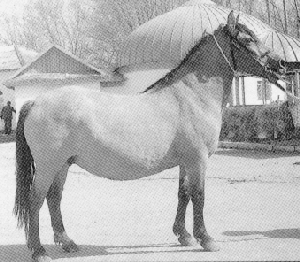Type the name of the breed you're looking for below
[wpdreams_ajaxsearchlite] Don't see the breed your're looking for? Click here and let us know!
Jabe horse
| Country Of Origin | Kazakhstan |
| History and Background | The Jabe breed is one of the distinct steppe horse groups within the Kazakh horse breed; its massive weight and measurements differentiate it from the rest of the Kazakh horses, however. Many Jabe horses are raised today for their ability to produce vast quantities of milk. The Jabe or Dzhabe horse is part of the Kazakh horse breed that has been in existence since 400 B.C. It thrives in the former Soviet state of Kazakhstan, specifically the areas near the Aral Desert and the northern regions of Yakutia. For this reason, Jabes are well-adapted to severe weather conditions. The Jabe was initially bred for its meat and milk and, in the 1960s, an effort to mass-produce the Jabe was underway. Stringent evaluation and breeding procedures were established in order to produce a pure breed with superior attributes. This resulted in successful improvement in the size and the quality of the breed. Today, the breed comes in three sub-types; they are the Emben, the Betpakdalin and the Kulandin. The Emben is arguably the best subtype of Jabe horses. The Betpakdalin is a cross between Jabe stallions and mares from Dzezkazgan. The Kulandin is a breed subtype developed in the Kulandin farms; it is a result of crossing Jabe stallions with Adaev mares. |
| Use Today | Riding horse, Pack horse, Meat, Milk |
| Height | 13.3 and 14 hands (53-56 inches, 135-142 centimeters) |
| Colour | Bay, Chestnut, Red |
| Characteristics | The Jabe horse is built for the harsh environment of Kazakhstan. It is characterized by powerful legs, thick skin, a broad body, a solid neck, thick hair covering, a deep chest, a strong head, and well-muscled hindquarters. |
| Personality and Temperament | Typically, the Jabe is used as a draft horse because of its obedience, docility, and inherently good nature. It is also patient and resistant to environmental stress. |
| Other Considerations | Jabe horses are hardy animals that have been reared by the locals because of their adaptability to Kazakhstan’s environmental conditions. Today, Jabe horses are usually raised and bred in horse stud farms and in wide pastures in Western Kazakhstan. The Jabe is resistant to many hazards of the Western Kazakhstan region. In a severe-conditions adaptability test, a sample of Jabe stallions was placed along with Yakut stallions of similar age in Yakutia near the Lena River. In three years, the Jabe stallions were still able to develop in terms of weight, height, and coat condition faster and better than the other breed. |



